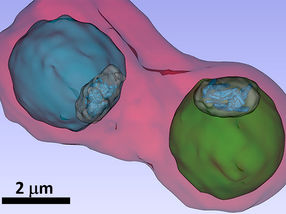Researchers propose alternative way to allocate science funding
Researchers in the United States have suggested an alternative way to allocate science funding. The method, which is described in EMBO reports, depends on a collective distribution of funding by the scientific community, requires only a fraction of the costs associated with the traditional peer review of grant proposals and, according to the authors, may yield comparable or even better results.
“Peer review of scientific proposals and grants has served science very well for decades. However, there is a strong sense in the scientific community that things could be improved,” said Johan Bollen, professor and lead author of the study from the School of Informatics and Computing at Indiana University. “Our most productive researchers invest an increasing amount of time, energy, and effort into writing and reviewing research proposals, most of which do not get funded. That time could be spent performing the proposed research in the first place.” He added: “Our proposal does not just save time and money but also encourages innovation.”
The new approach is possible due to recent advances in mathematics and computer technologies. The system involves giving all scientists an annual, unconditional fixed amount of funding to conduct their research. All funded scientists are, however, obliged to donate a fixed percentage of all of the funding that they previously received to other researchers. As a result, the funding circulates through the community, converging on researchers that are expected to make the best use of it. “Our alternative funding system is inspired by the mathematical models used to search the internet for relevant information,” said Bollen. “The decentralized funding model uses the wisdom of the entire scientific community to determine a fair distribution of funding.”
The authors believe that this system can lead to sophisticated behavior at a global level. It would certainly liberate researchers from the time-consuming process of submitting and reviewing project proposals, but could also reduce the uncertainty associated with funding cycles, give researchers much greater flexibility, and allow the community to fund risky but high-reward projects that existing funding systems may overlook.
“You could think of it as a Google-inspired crowd-funding system that encourages all researchers to make autonomous, individual funding decisions towards people, not projects or proposals,” said Bollen. “All you need is a centralized web site where researchers could log-in, enter the names of the scientists they chose to donate to, and specify how much they each should receive.”
The authors emphasize that the system would require oversight to prevent misuse, such as conflicts of interests and collusion. Funding agencies may need to confidentially monitor the flow of funding and may even play a role in directing it. For example they can provide incentives to donate to specific large-scale research challenges that are deemed priorities but which the scientific community can overlook.
“The savings of financial and human resources could be used to identify new targets of funding, to support the translation of scientific results into products and jobs, and to help communicate advances in science and technology,” added Bollen. “This funding system may even have the side-effect of changing publication practices for the better: researchers will want to clearly communicate their vision and research goals to as wide an audience as possible.”
Most read news
Organizations
Other news from the department science

Get the chemical industry in your inbox
By submitting this form you agree that LUMITOS AG will send you the newsletter(s) selected above by email. Your data will not be passed on to third parties. Your data will be stored and processed in accordance with our data protection regulations. LUMITOS may contact you by email for the purpose of advertising or market and opinion surveys. You can revoke your consent at any time without giving reasons to LUMITOS AG, Ernst-Augustin-Str. 2, 12489 Berlin, Germany or by e-mail at revoke@lumitos.com with effect for the future. In addition, each email contains a link to unsubscribe from the corresponding newsletter.












![[Fe]-hydrogenase catalysis visualized using para-hydrogen-enhanced nuclear magnetic resonance spectroscopy](https://img.chemie.de/Portal/News/675fd46b9b54f_sBuG8s4sS.png?tr=w-712,h-534,cm-extract,x-0,y-16:n-xl)









































